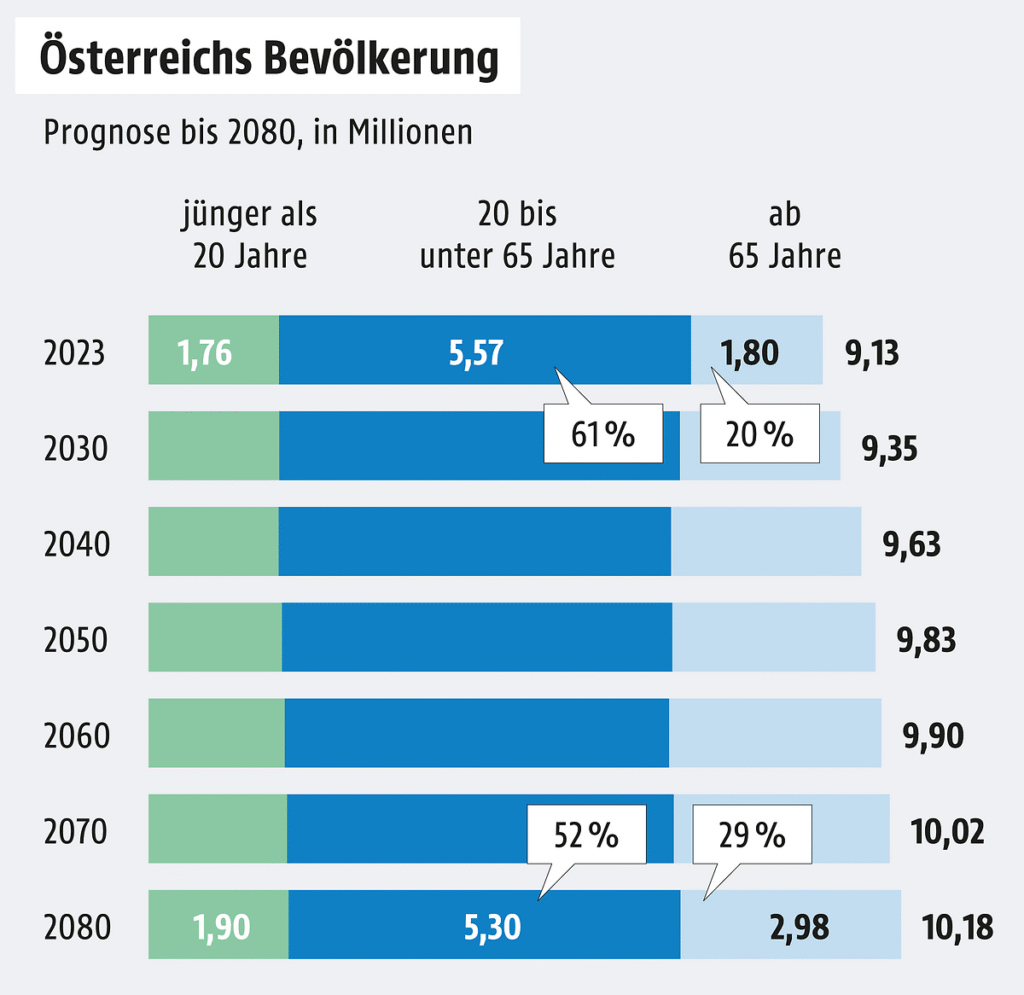
Austria’s population will continue to grow modestly for another 15 years before beginning a slow decline, according to the latest population forecast (Bevölkerungsprognose) 2025 released by Statistik Austria. The country’s population is expected to peak at around 9.41 million in 2040 and fall to about 9.07 million by 2080.
The report marks a turning point in Austria’s demographic outlook, showing that immigration remains the only factor sustaining growth. Between 2024 and 2040, the population will rise by roughly 2.5 percent, driven mainly by migration. Births, however, will remain below deaths, resulting in a negative natural balance of about 23,000 people annually. “Without migration, Austria’s population would already be shrinking,” said Statistik Austria Director-General Tobias Thomas.
Austria’s society is also ageing rapidly. The share of people aged 65 and older will rise from around 20 percent in 2024 to 26 percent by 2040, while the working-age population will shrink by nearly five percent. Life expectancy will continue to increase, reaching close to 90 years for men and 92 for women by 2080. This shift, Thomas warned, will strain the labour market, pensions, and healthcare systems.

Population trends will differ widely between regions. Vienna is forecast to grow by about nine percent by 2040, driven by immigration, while Carinthia may see a population decline of more than three percent. Other states like Lower Austria and Vorarlberg will record moderate gains, but regional disparities are likely to widen.
Statistik Austria concludes that Austria’s demographic future will be shaped less by growth and more by ageing. The country will rely increasingly on immigration to maintain its population, while policymakers face the challenge of adapting labour, pension, and healthcare systems to a rapidly changing society.

